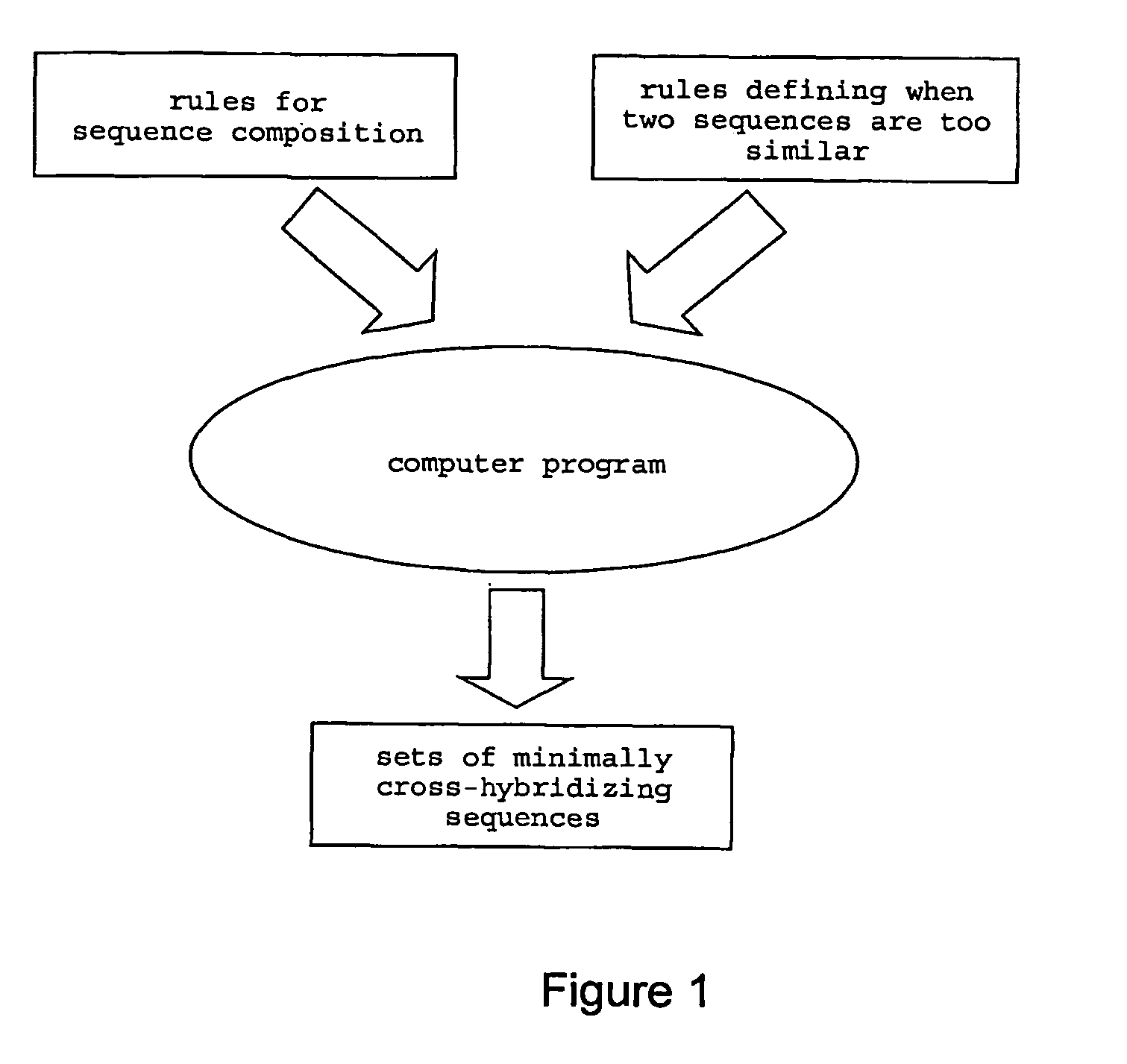Polynucleotides for use as tags and tag complements, manufacture and use thereof
a technology of polynucleotides and tags, applied in the field of family members of oligonucleotide tags, can solve the problems of multiplexing difficult simultaneous use of multiple hybridization probes in a single experiment, and problems, etc., to achieve the effect of simplifying discussion
- Summary
- Abstract
- Description
- Claims
- Application Information
AI Technical Summary
Benefits of technology
Problems solved by technology
Method used
Image
Examples
example 1
Cross Talk Behavior of Sequence on Beads
[0250] A group of 100 sequences, randomly selected from Table I, was tested for feasibility for use as a family of minimally cross-hybridizing oligonucleotides. The 100 sequences selected are separately indicated in Table I along with the numbers assigned to the sequences in the tests.
[0251] The tests were conducted using the Luminex LabMAP™ platform available from Luminex Corporation, Austin, Texas, U.S.A. The one hundred sequences, used as probes, were synthesized as oligonucleotides by Integrated DNA Technologies (IDT, Coralville, Iowa, U.S.A.). Each probe included a C6 aminolink group coupled to the 5′-end of the oligonucleotide through a C12 ethylene glycol spacer. The C6 aminolink molecule is a six carbon spacer containing an amine group that can be used for attaching the oligonucleotide to a solid support. One hundred oligonucleotide targets (probe complements), the sequence of each being the reverse complement of the 100 probe seque...
example 2
Tag Sequences Used in Sorting Polynucleotides
[0261] The family of non cross hybridizing sequence tags or a subset thereof can be attached to oligonucleotide probe sequences during synthesis and used to generate amplified probe sequences. In order to test the feasibility of PCR amplification with non cross hybridizing sequence tags and subsequently addressing each respective sequence to its appropriate location on two-dimensional or bead arrays, the following experiment was devised. A 24mer tag sequence can be connected in a 5′-3′ specific manner to a p53 exon specific sequence (20mer reverse primer). The connecting p53 sequence represents the inverse complement of the nucleotide gene sequence. To facilitate the subsequent generation of single stranded DNA post-amplification the tag-Reverse primer can be synthesized with a phosphate modification (PO4) on the 5′-end. A second PCR primer can also be generated for each desired exon, represented by the Forward (5′-3′) amplification pri...
PUM
| Property | Measurement | Unit |
|---|---|---|
| Temperature | aaaaa | aaaaa |
| Fraction | aaaaa | aaaaa |
| Fraction | aaaaa | aaaaa |
Abstract
Description
Claims
Application Information
 Login to View More
Login to View More - R&D
- Intellectual Property
- Life Sciences
- Materials
- Tech Scout
- Unparalleled Data Quality
- Higher Quality Content
- 60% Fewer Hallucinations
Browse by: Latest US Patents, China's latest patents, Technical Efficacy Thesaurus, Application Domain, Technology Topic, Popular Technical Reports.
© 2025 PatSnap. All rights reserved.Legal|Privacy policy|Modern Slavery Act Transparency Statement|Sitemap|About US| Contact US: help@patsnap.com



